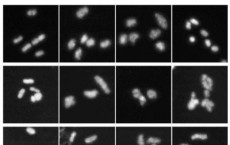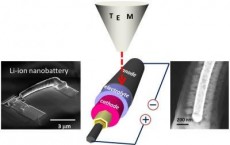
UCLA researchers are now able to peer deep within the world's tiniest structures to create three-dimensional images of individual atoms and their positions. Their research, published March 22 in the journal Nature, presents a new method for directly measuring the atomic structure of nanomaterials.

NASA's Dawn spacecraft has revealed unexpected details on the surface of the giant asteroid Vesta. New images and data highlight the diversity of Vesta's surface and reveal unusual geologic features, some of which were never previously seen on asteroids.

Rapidly dividing cancer cells are skilled at patching up damage that would stop normal cells in their tracks, including wear and tear of telomeres, the protective caps at the end of each chromosome.

In the hope of reducing maternal mortality in a region where 1 woman in 31 loses her life as she carries or gives birth to her baby*, a workshop has been organized in Mali today by the Global Health Initiative of the University of Montreal Superhospital Research Centre (CRCHUM) and the Government of...

A new assessment of wind energy in India by Lawrence Berkeley National Laboratory has found that the potential for on-shore wind energy deployment is far higher than the official estimates- about 20 times and up to 30 times greater than the current government estimate of 102 gigawatts. This landmark...

Hunting in the ocean's murky depths, vision is of little use, so toothed whales and dolphins (odontocetes) rely on echolocation to locate tasty morsels with incredible precision. Laura Kloepper from the University of Hawaii, USA, explains that odontocetes produce their distinctive echolocation click...

Microsoft Corp co-founder Paul Allen has donated an additional $300 million to a foundation aimed at expanding research into how the brain works and how best to treat brain-related disorders.

It turns out you can be too thin-especially if you're a nanoscale battery. Researchers from the National Institute of Standards and Technology (NIST), the University of Maryland, College Park, and Sandia National Laboratories built a series of nanowire batteries to demonstrate that the thickness of ...

The physical phenomenon of plasmon resonances in small metal particles has been used for centuries. They are visible in the vibrant hues of the great stained-glass windows of the world. More recently, plasmon resonances have been used by engineers to develop new, light-activated cancer treatments an...

The percentage of electronic waste occupying our landfills has grown at an alarming rate over the last decade, giving rise to concerns about the toxicity of components used in consumer electronics.

Thanks to the MESSENGER spacecraft, and a mission that took more than 10 years to complete, scientists now have a good picture of the solar system's innermost planet.
Researchers at Weill Cornell Medical College have developed a computer program that has tracked the manner in which different forms of dementia spread within a human brain. They say their mathematic model can be used to predict where and approximately when an individual patient's brain will suffer f...